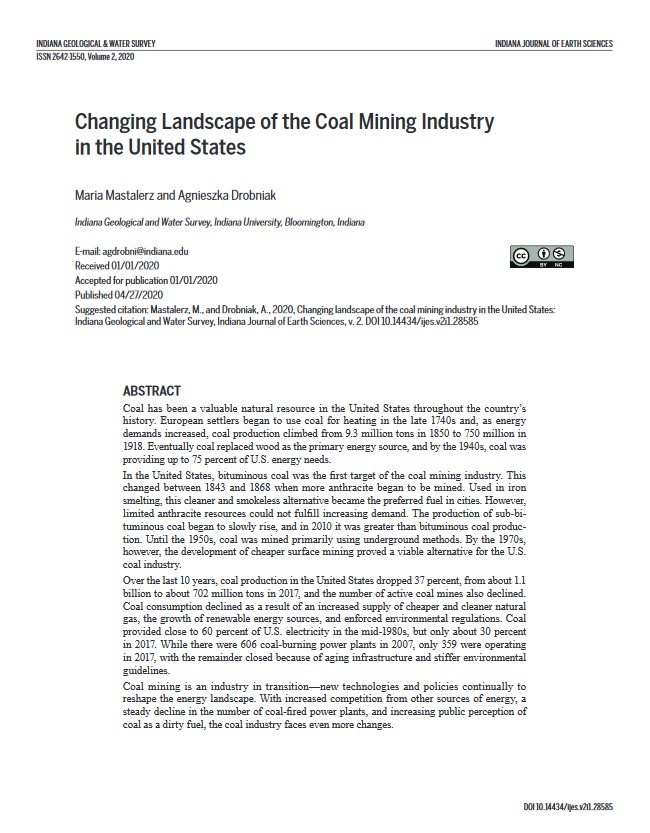Changing Landscape of the Coal Mining Industry in the United States
Main Article Content
Abstract
Coal has long been a valuable natural resource in the United States throughout the country’s history. European settlers began to use coal in the late 1740s and, as energy demands increased, coal production climbed from 9.3 million tons in 1850 to 750 million in 1918. Eventually coal replaced wood as the primary energy source, and by the 1940s coal provided up to 75 % of US energy.
Bituminous coal was the first target of US coal mining. This changed between 1843 and 1868 when more anthracite began to be mined. Used in iron smelting, this cleaner and smokeless alternative became the preferred fuel in cities. However, limited anthracite resources could not fulfill increasing demand. Production of sub-bituminous coal began to slowly rise, and in 2010 it was greater than bituminous coal production. Until the 1950s, coal was primarily mined using underground methods. By the 1970s, however, the development of cheaper surface mining proved a viable alternative for the US coal industry.
In the last 10 years, coal production in the United States has dropped 37 %, from about 1.1 billion to about 702 million tons in 2017, and the number of active coal mines has also declined. Coal consumption declined as a result of an increased supply of cheaper and cleaner natural gas, growth of renewable energy sources, and enforced environmental regulations. Coal provided close to 60 % of US electricity in the mid-1980s, but only about 30 % in 2017. While there were 606 coal-burning power plants in 2007, only 359 were operating in 2017, with the remainder closed because of aging infrastructure and stiffer environmental guidelines.
Coal mining is an industry in transition as new technologies and policies continually reshape the energy landscape. With increased competition from other sources of energy and a steady decline in the number of coal-fired power plants, the coal industry needs innovations to continue.
Downloads
Article Details
All content for Indiana Journal of Earth Sciences is licensed under a Creative Commons Attribution-NonCommercial 4.0 International License (CC BY-NC 4.0; http://creativecommons.org/licenses/by-nc/4.0/), wherein the author retains copyright. As a service to the research community and as an outlet of its public mission, the IGWS commitment to true open access to scholarly information extends to authors, thus the Indiana Journal of Earth Sciences content is archived at the IGWS and the IU Open Scholar Works Archive.
